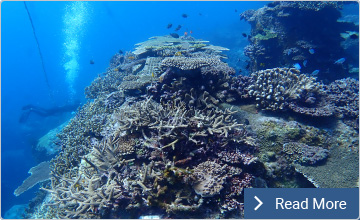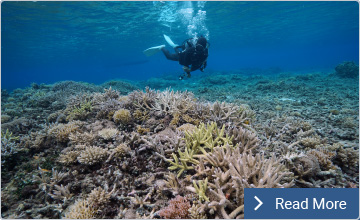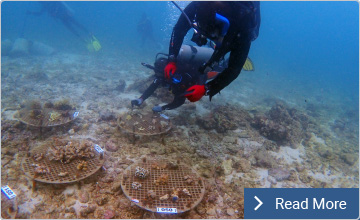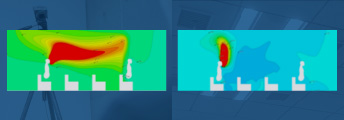Pick Up Technologies
Coral Net
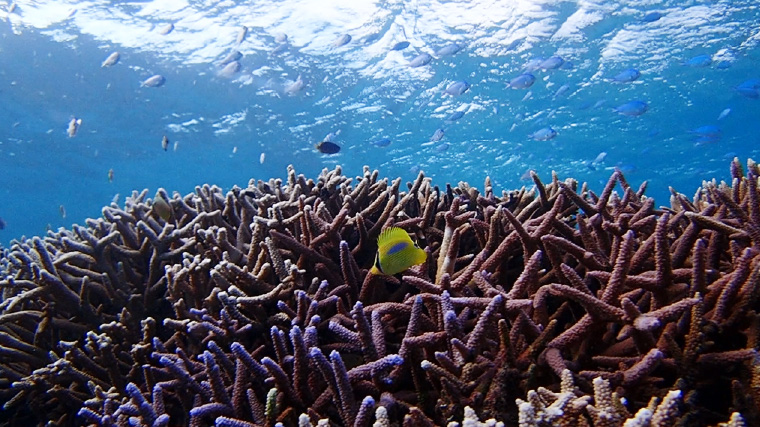
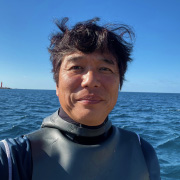
Environmental Engineering and
Bioengineering Group
Coral Conservation Initiatives
Kajima recognizes that addressing environmental issues, including climate change is a key management issue. The conservation and rehabilitation of coral reefs are one of the most important environmental issues.
Kajima is one of the oldest and largest Japanese general construction companies to have been involved in research and development on coral rehabilitation technology for more than 20 years.
Coral Net, Kajima’ s core coral rehabilitation technology, has been tested in Okinawa, Japan since 2003, and enables more stable coral rehabilitation than conventional technologies. The mesh-like structure of Coral Net reduces the accumulation of fine particles including red soil, which can cause stress to corals. Coral Net also allows suitable light and water flow, creating an enabling environment for natural settlement and growth of corals. The larvae of corals settle on the underside of the Coral Net, thus avoiding predation from organisms like crown-of-thorns starfish.
In order to effectively introduce technologies, such as Coral Net, for the conservation and regeneration of coral it is important to assess the marine environment in terms of time and space through on-site observations and the numerical oceanic simulation. The utilization of oceanic simulation allows for quantitative analysis of fluctuation in ocean currents, temperature, salinity, water quality, and other factors over a wide range and long period of time. Based on the simulation results, selecting suitable coral rehabilitation methods and implementation locations for the target marine area becomes possible.
Since 2023, Kajima’ s reef restoration project targeting coral reefs has expanded the implementation area in South-East Asia.
We will continue the research and development to apply its technology to coral reef restoration projects in Japan and around the world.
Important Facts
Coral Net (Substrate to which coral larvae attach)

Concept and features of Coral Net

Biodegradable Coral Net (Plastic)
The Biodegradable Coral Net has been developed to preserve of coral reef ecosystems, and only the implanted coral remains after natural degradation within about 10 years.

Durable Coral Net (Stainless steel )
The Durable Coral Net is installed in concrete structures such as harbors. The Durable Coral Net can be stably installed even in environments with strong waves and currents.
Evaluation of marine environments suitable for coral growth using oceanic simulations
Decrease in water temperature and strong current during approaching typhoon.
Color: surface temperature, contour:atmospheric pressure vector: surface current velocity.
Calcification rate of coral reefs in Okinawa as a function of changes in the marine environment at coral habitable depths (shallower than 50 m).
During the day, coral photosynthesis is dominant, promoting calcification. In contrast, coral activity weakens at night when photosynthesis does not occur.
Introduction Video(Japanese Version)
Coral nets, which have a proven track record of being used as a foundation for coral propagation in port areas, contribute to coral reef conservation activities. They prevent the accumulation of sediment and damage from predators like the crown-thorns starfish, creating a favorable growth environment for corals.
News
-
- 2023/6/2Coral Reef Restoration Project InCORE Launches in the Philippines (PDF: 840KB)
Feature Articles
Applications
Application to Coral Reef in a Port
Period:2011 - Location:Naha Port, Okinawa, Japan
Coral habitat inside Naha Port is extremely limited compared to the outer the port side, and this is thought to be due to the inflow and deposition of red soil from the land, which affects coral colonization and growth. In the spring of 2011, stainless steel Coral Nets were installed in Naha Port and have continuously monitored local conditions for more than 10 years. As a result, coral communities have expanded in areas where few corals originally grew. In some areas, the coral communities have expanded to about four times the area of the Coral Net substrate.
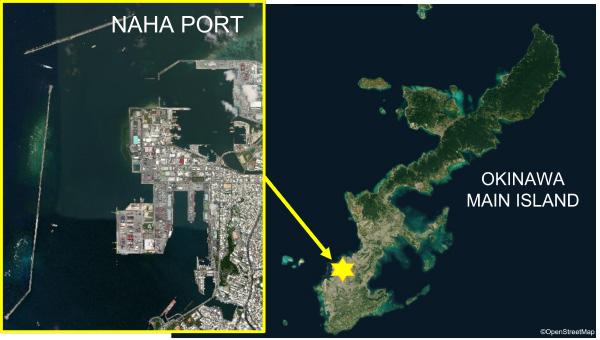
Performance of Implementation
At installation
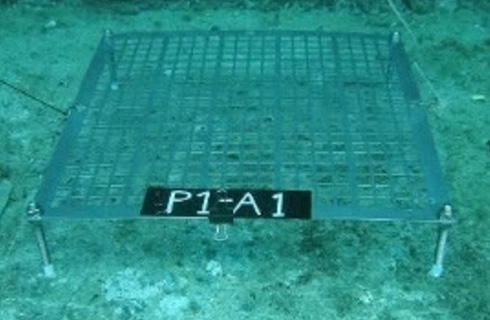
Durable Coral Net (Stainless steel )
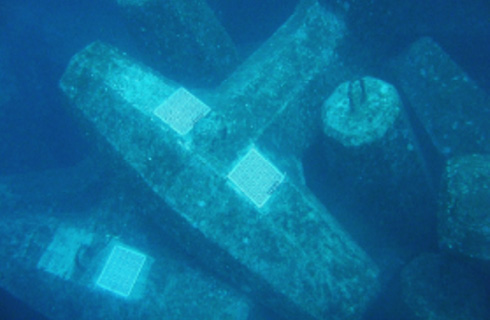
Installation onto the wave-dissipating block in the port
5 years after installation
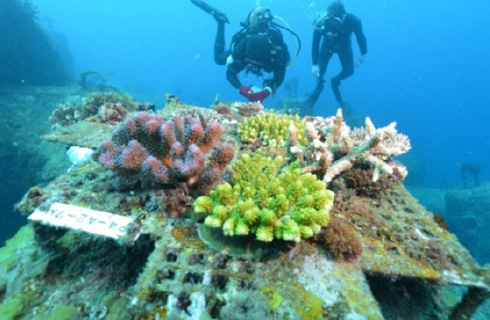
Diverse coral colonies naturally regenerated in 5 years
10 years after installation
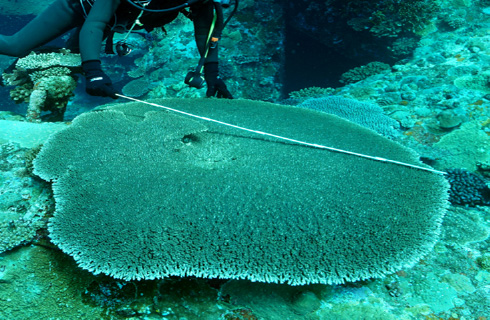
Coral has grown significantly after 10 years
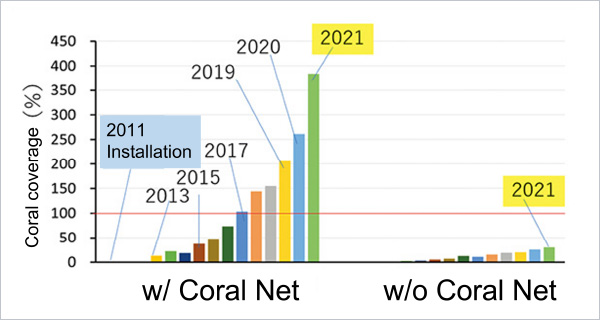
Comparison of coral coverage (w/ and w/o Coral Net)
Applications
Application to Typhoon Damaged Coral Reefs
Period:2011- Location:Kerama Islands, Okinawa, Japan
In the Kerama Islands, we collaborated with local divers to demonstrate effectiveness of Coral Net in natural sea areas. Recently, coral communities have been physically destroyed by larger typhoons. We installed Coral Net in areas where coral debris had accumulated. As a result, rapid recovery of the coral community was observed at the sites where Coral Nets were installed.
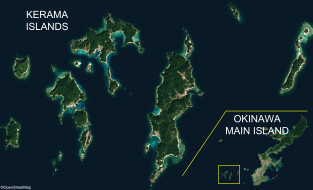
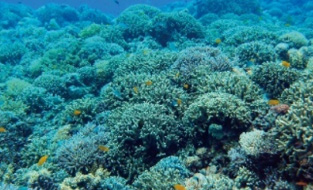
Before the typhoon passed (2011)
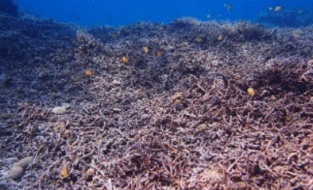
Branch coral collapsed by the typhoon (2012)
Performance of Implementation
At installtion
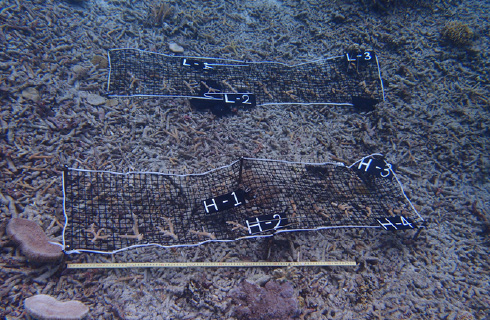
Installed Coral Net in areas where coral debris had accumlated (2012)
4 years after installation
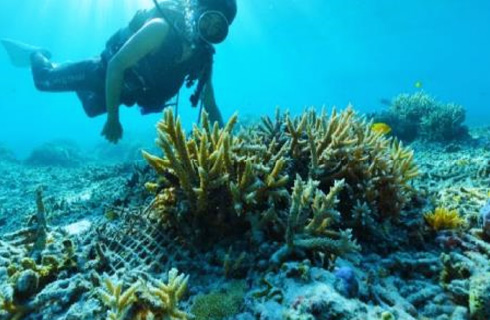
Diverse coral colonies naturally regenerated in 4 years (2016)
9 years after installation
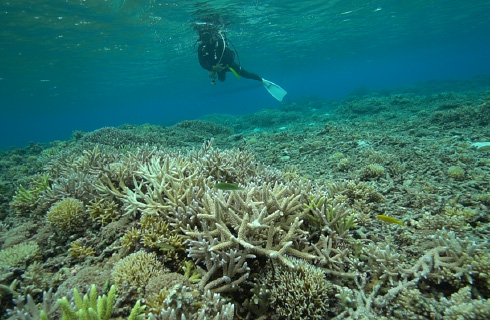
Coral community has grown significantly after 9 years (2021)
10 years after installation
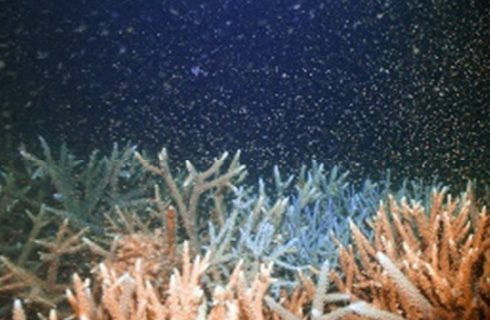
Coral spawning (2022)
Applications
InCORE (Integrated Aproach for Coral Reef
Conservation and Rehabiitation) Project
Period:2023- Location:Tangalan Coastal Area, Aklan Province, Panay Island, Philippines
The Coral Triangle, located between the Pacific and Indian oceans, is recognized as a global centre of marine biodiversity and a global priority for conservation.
We have collaborated with Tokyo Institute of Technology (Tokyo Tech) and University of the Philippines Visayas (UPV) to launch a coral conservation project (InCORE) in Tangalan, Philippines.

InCORE (Integrated Aproach for Coral Reef Conservation and Rehabiitation) Project
This project proposes and implements an integrated approach that includes environmental assessment, the implementation of coral rehabilitation and the verification of effectiveness through monitoring.
The project won an award from by Asian Development Bank (ADB) as part of its "Technology Innovation Challenge for Healthy Oceans - Restore and Protect Coral Reefs." international open call for proposal.
Performance of Implementation
Field surveys
In collaboration with the local government and UPV, ecological surveys was conducted.
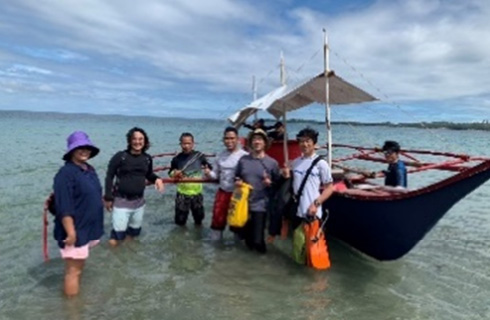
On-site survey with local residents
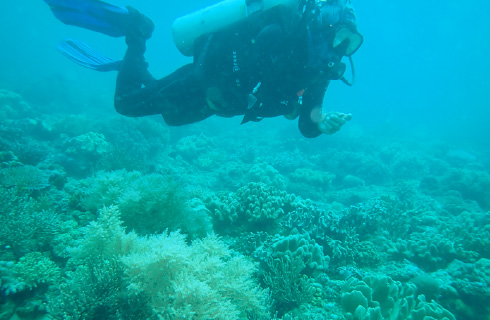
Spot-Check Survey
Numerical simulation
Coastal environmental numerical simulation conducted by Tokyo Tech allows us to analyze and predict the spatial distribution and temporal changes of factors such as flow, temperature, salinity, and water quality in the marine environment.
Coral Net is installed base on these environmental assessments by both of numerical simulation and field survey.
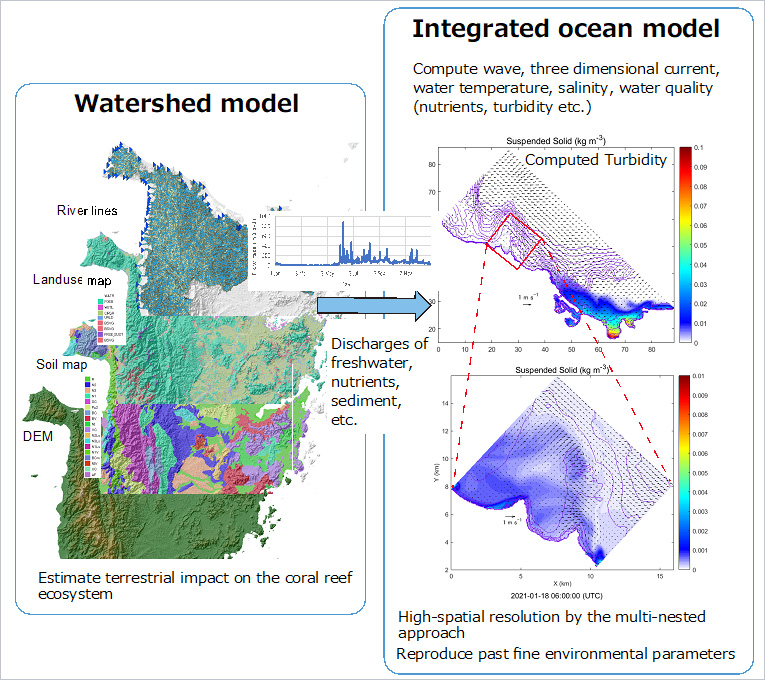
Integrated Ecosystem Modeling System
Related materials

